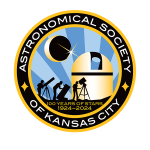Originally designed in 1891 for measuring small exit pupils from telescopes in order to calculate the unknown focal length of a telescope, it can be used ( in adapted form) however to measure your own dark-adapted eye pupil too, from your backyard. Might come in handy when considering buying binoculars for night observations.
http://www.southastrodel.com/Page209.htm
A simple home-made version can be made with a piece of cardboard, a ruler, a pencil and a needle.
See my own version below.
Two intersecting lines and pinched with two pinholes for each distance.
How does it work?
Look at a bright star through the 2 mm holes. You will see one hole. Slide the dynameter in front of your eye until you see two touching holes.That will be the size of you dark adapted eye on that particular spot. When you slide further the two holes no longer touch each other.
So how does it look like for an observer with a 4 mm entrance pupil? Under
So this old-school solution from the 19th century might come in handy when you don't like holding drills of varying sizes or a sharp caliper very close to your eyes. No flash lights needed either.
I have mine since the eighties....
Real antique dynameters can be bought in the unavailablium shop.








